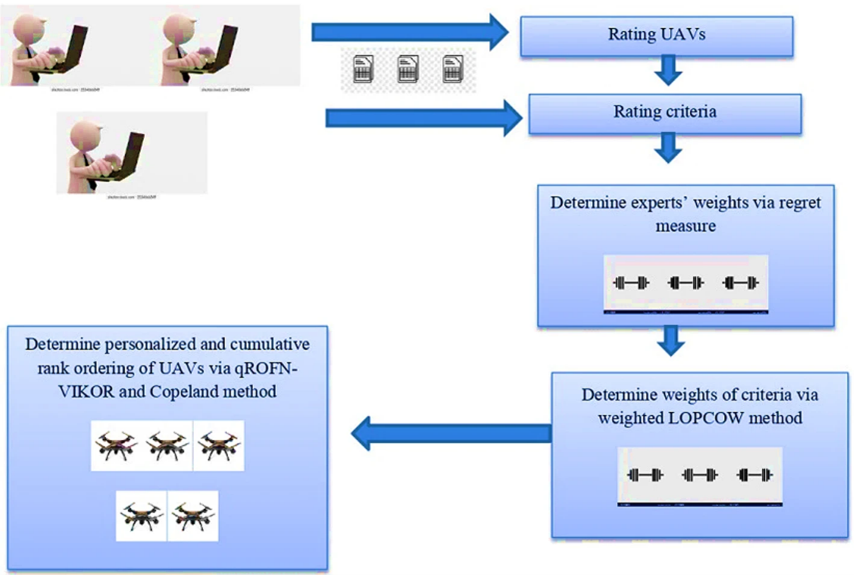April 2023 | ARTIFICIAL INTELLIGENCE REVIEW
Afyon Kocatepe University in Turkey conducted a study focusing on smart agriculture and the role of unmanned aerial vehicles (UAVs) in this field. UAVs have become essential in modern agriculture due to their ability to assist in various agricultural activities. This study aimed to propose an integrated decision-making framework for determining the most suitable agricultural UAV.
Previous studies on UAV evaluation lacked effective modeling of uncertainty, systematic determination of expert weights, consideration of expert and criteria types during weight calculation, and personalized ranking of UAVs. To address these gaps, the researchers identified nine critical selection criteria based on literature and expert opinions, and considered five existing UAVs for evaluation.
The study developed a new integrated framework using q-rung orthopair fuzzy numbers for UAV selection. The experts' weights were estimated methodically using the regret measure, and a weighted logarithmic percentage change-driven objective weighting technique was formulated for criteria weight calculation. An algorithm combining the VIKOR approach with the Copeland strategy was presented for personalized ranking of UAVs.
The findings highlighted that the most important criteria for agricultural UAV selection were the "camera," "power system," and "radar system." The DJ AGRAS T30 UAV was identified as the most promising option. The developed framework can serve as an effective decision support system for farmers, managers, policymakers, and other stakeholders in the agriculture sector as the use of UAVs in agriculture becomes increasingly inevitable.

Proposed agricultural UAV selection model with the qRONs





